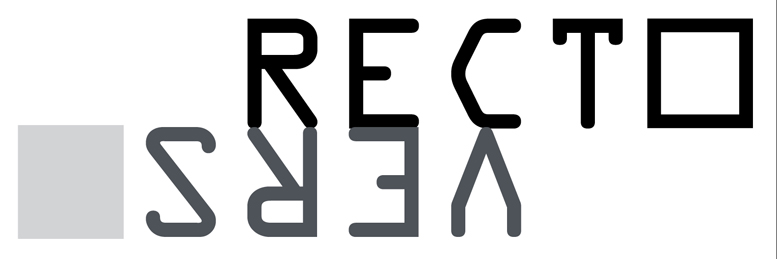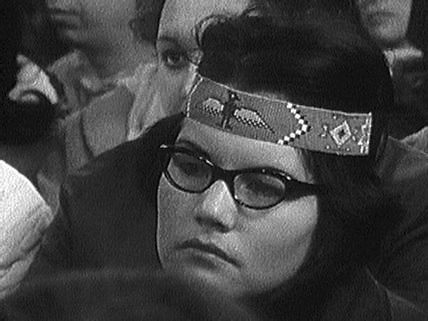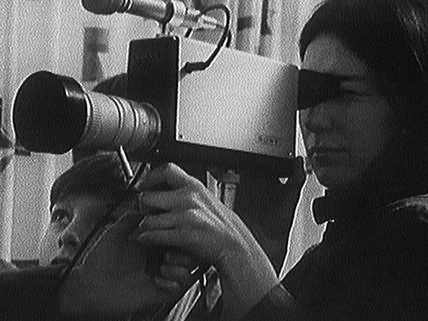
Back to archives | Back to FOFA Gallery
Weekly Outdoor Screening Series I-IV

About
The FOFA Gallery is proud to present our annual screening series Recto/Verso for four summer evenings, free to the public. The walk in screenings are programmed from the ONF/NFB catalogue with the intention of increasing access to the artistic experimentation and rich filmic heritage of Québec and Canada.
Recto and Verso are printing terms to describe two sides of a sheet of paper within a codex. Here we are applying the terms to two methods of cultural production: Manifestation and Demonstration. Adhering these two terms to the “recto/verso” format, this summer's screening series considers the role of the artist’s agency and puts into question the convergence between art and activism.
All films used in the screenings are courtesy of the NFB. Special thanks to Jane Gutteridge.
Dates & Times
Screening I: Thursday July 19, Reception 8:30 p.m., Screening 9:00 p.m.
Screening II: Thursday July 26, Reception 8:30 p.m., Screening 9:00 p.m.
Screening III: Thursday August 2, Reception 8:00 p.m., Screening 9:00 p.m.
Screening IV: Thursday August 9, Reception 8:30 p.m., Screening 9:00 p.m.
Location
Ste-Catherine Street Sculpture Garden Courtyard*
1515 Ste-Catherine Street West, EV 1-715
Metro Guy-Concordia
*In case of rain, the screening will take place in the gallery.
Free of charge. Everyone welcome.
Screening I: "Fragments, Interpretations, Expressions"
Thursday July 19, 2012, Reception: 8:30 p.m., Screening: 9:00 p.m.

Film still, Very Nice, Very Nice, Arthur Lispett, 1961, Courtesy of the NFB
About
Through collage, fragmentation and juxtaposition, the first three short films are an experiential kaleidoscope, capturing a sense of anxiety and presenting the chaos of the city made visible through artistic interpretation. The last two short films experiment with a hybrid of fiction and documentary form, capturing the sense of freedom through the ideas and ideals of youth.
This is a Recorded Message/Ceci es un message enregistré, Jean-Thomas Bédard, 1973, EN/FR
Made up of hundreds of cut-out color ads projected in fragmented, rapid succession, this animated film without words takes a critical look at the conditioning process that underlies consumerism in our world of materialism. Seductive advertising is seen as the main motivating force in shaping the desires, the needs and, to a large degree, the lives of modern men and women. A provocative film to stimulate reflection.
Very Nice, Very Nice, Arthur Lipsett, 1961, EN/FR
Arthur Lipsett's first film looks behind the business-as-usual face we put on life and shows anxieties we want to forget. It is made of dozens of pictures that seem familiar, with fragments of speech heard in passing and, between times, a voice saying, "Very nice, very nice."
23 Skidoo, Julian Biggs, 1964, EN/FR
If you erase the people of a downtown city, the effect is bizarre, not to say disturbing. That is what this film does. It shows the familiar urban scene without a soul in sight: streets empty, buildings empty, yet everywhere there is evidence of recent life and activity. At the end of the film we learn what has happened.
Rouli-roulant/The Devil's Toy, Claude Jutra, 1966, FR
It was frowned upon by the constabulary and disapproving adults, but the skateboard gave the youngsters who mastered its technique a thrilling sensation of speed unexcelled by any other pavement sport. Filmed in 1966 on Montréal streets before the elongated roller skate was banned, this film captures the exuberance of boys and girls having the time of their lives in free-wheeling downhill locomotion.
Le temps perdu, Michel Brault, 1964, FR/EN Subtitles
A 16-year-old girl recalls the last moments of her summer vacation, spent with friends in the Laurentians north of Montréal. She reminisces about their talks on life, death, love, and God. Shot in direct cinema style, working from a script that left room for the teenagers to improvise and express their own thoughts, the film sought to capture the immediacy of the youths' presence - their bodies, their language, their environment.
Screening II: "Manifest, Speak, Occupy"
Thursday July 26, 2012, Reception: 8:30 p.m., Screening: 9:00 p.m.

Film still, Occupation, Bill Ried, 1970, Courtesy of the NFB
About
Governance and exclusion are two themes that are represented in this week’s screening series. Through poetry, speech acts, and actions these films illustrate political, social and economic unrest.
Speak White, Pierre Falardeau and Julien Poulin, 1980, FR
The poem Speak White by author Michèle Lalonde, was first recited at La grande nuit de la poésie in Montréal in 1970. The film is a series of black and white photographs, with the text read by Marie Eykel, depicting what is a verbal attack against imperialism, calling for solidarity among those exploited economically and culturally by the dominant classes.
Occupation, Bill Reid, 1970, EN
Concerned with the democratization of their university, striking political science students occupy the offices of the Political Science Department at McGill University. The issue: greater student control over the hiring of faculty. The film crew lives with the students and follows their action through confusion, argument, dissent, and negotiations with faculty. The result is an intimate view of a student political action.
Screening III: "Recollect, Demonstrate, Situate"
Thursday August 2, 2012, Reception: 8:30 p.m., Screening: 9:00 p.m.

Film still, You are on Indian Land, Mort Ransen, 1969, Courtesy of the NFB
About
This screening aims to give an understanding to the forms and conditions in which dissent manifests. These films, through subtle and explosive narratives that depict historical circumstances, capture the power of recollection and lived experience.
A Trip Down Memory Lane, Arthur Lispett, 1965, EN/FR
An incisive look at human might, majesty, and mayhem, compiled from some peculiar newsreel items of the last fifty years. The filmmaker calls this a time capsule, but his arrangement of pictures makes it almost explosive. There are hundreds of items, once front-page stuff, but all wryly grotesque when seen in this reshuffle of the past.
The Songs of Chris Cobb, Colin Low, 1967, EN
Through the use of film as a means of communication, the people of Fogo Island, Newfoundland, voice some of their daily concerns. In this film, Islander Chris Cobb sings his own songs and recites his poems about the old days and the recent changes on Fogo.
You are on Indian Land/Vous êtes en terre indienne, Mort Ransen, 1969, EN
A film report of the 1969 protest demonstration by Mohawk Indians of the St. Regis Reserve on the international bridge between Canada and the United States near Cornwall, Ontario. By blocking the bridge, which is on the Reserve, and causing a considerable tie-up of motor traffic, the Indians drew public attention to their grievance that they were prohibited by Canadian authorities from duty-free passage of personal purchases across the border; a right they claim was established by the Jay Treaty of 1794. The film shows the confrontation with police, and ensuing action.
Screening IV: "Mediate, Represent, Communicate"
Thursday August 9, 2012, Reception: 8:30 p.m., Screening: 9:00 p.m.

Film still, VTR St. Jacques, Bonnie Sherr Klein, 1969, Courtesy of the NFB
About
The first two films represent a certain artistic mastery of the cinematic form. The use of surrealist techniques invokes a commentary on the tropes of perception and the influence of media. The concluding film of the Recto/Verso screening series, exemplifies the impact of communication technologies when put in the hands of citizens to express the social issues that concern them.
Free Fall, Arthur Lispett, 1964, EN/FR
Free Fall is made of film trimmings assembled to make a wry comment on modern man and his world. It suggests a surrealist dream of mankind's fall from grace into banality.
Night Mayor/Maire de nuit, Guy Maddin, 2009, EN/FR Subtitles
Winnipeg, 1939. A Bosnian immigrant to Canada, Nihad Ademi, conceives of a way to harness the power of the Aurora Borealis in order to broadcast imagery of his vast and beloved adopted land from coast to coast to coast. From his tenement apartment-cum-laboratory, with the help of his large and eager family, Nihad perfects his device and prepares to bring Canada – or at least images of Canada, from the fighting beaver on – to its own people. From directly in the centre of the country, a startling broadcast emanates like ripples in a formerly placid pond.
Incredibly, due to the unfathomable powers of the Northern Lights, the device begins projecting images that do not even exist – images plumbed first from the depths of Nihad Ademi’s subconscious mind, and presently from the group consciousness of the whole citizenry of Canada.
However, all of this does not rest easy with the government. They stage a raid on Nihad’s laboratory in an effort to prevent the dissemination of unregulated patriotic imagery. The climactic donnybrook between cops and family leads to the tragic suspension
Opération boule de neige/VTR St. Jacques, Bonnie Sherr Klein, 1969, FR/EN Subtitles
An experiment in using videotape recording (VTR) and closed-circuit television to stimulate social action in a poor district of Montréal. A citizens' committee, formed in the downtown neighborhood of St-Jacques, was given a VTR unit, which they used to record people's problems and concerns. After viewing the edited tapes, people recognized their common problems and began to talk of joint solutions. In trying to change what needed changing they ran into resistance, but the effectiveness of this means of promoting joint action had been tested and proved.
+++++
Links
Acknowledgements
FOFA Gallery would like to express our gratitude to the National Film Board of Canada for their generosity, materials and support for our screening series.
© Concordia University